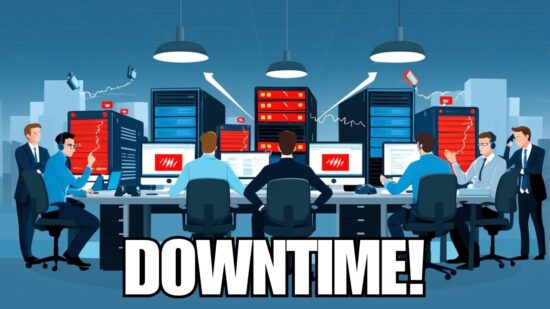As far as information technology goes, the data storage industry has become one of the most dynamic sectors today. Businesses depend on information and data, which must be stored securely to ensure that it’s safe and accessible at all times, from anywhere.
Technology can be expensive to purchase, as well as maintain. Although computer devices and technology are critical investments for any business, many of them just can’t afford to upgrade or replace hardware or software as needed. What’s the best solution for these businesses? Virtualization.
Virtualization
In an IT environment, virtualization is the creation of a virtual version of a device or resource including things like a server, network, storage device or operating system. Users can access the virtual resource as if it were stored on their computer. Virtual environments are typically located off-site and accessed via the Internet.
The Benefits of Virtualization
Virtualization allows you to use technology at a reduced cost. One of the many benefits of virtualization is the decreased cost, and extended life of your business technology. Virtualization improves your return on investment, reduces IT costs and reduced energy consumption while providing increased utilization of valuable IT resources.
The Four Main Types of Virtualization
- Server Virtualization
As one of the most popular IT initiatives for medium-to-large sized businesses, server virtualization has many benefits; it allows organizations to consolidate space, reduce costs and energy consumption, as well as improve their ability to manage important IT resources.
Server virtualization involves moving existing physical servers into a virtual environment, which is hosted on an offsite physical server. In addition, some servers can also be stored offsite by various hosting companies.
With server virtualization, businesses can use more than one server at a time, which allows them to store vast amounts of information securely.
- Operating System Virtualization
Operating system virtualization is a lot different than the traditional virtual machine (VM) method; it involves relocating a desktop’s traditional operating system to a virtual environment. While the computer remains on your desk, the operating system is hosted on a server in another location.
Essentially, the components of the hosted operating system (OS) are replicated into each virtual environment (VE). For example, if the OS is Windows 2000, all VEs must run Windows 2000.
Typically one version will be on the server, and copies of the OS are presented to each individual user. Users then have the ability to modify the OS as they see fit, while other users won’t be affected.
- Hardware Virtualization
This is accomplished by taking the components of a machine and making them virtual; hardware virtualization separates software from hardware resources, while the software remains on the physical machines.
An example of this is a Windows PC running a virtual version of Linux. The virtual machine (VM) is installed in the circuits of a hardware component, as opposed to being called up from a third-party software application.
The VM manager is referred to as a hypervisor, which controls processor, memory and other various firmware resources. Basically, the hypervisor allows more than one operating system to run on the same device, without binary or source code changes.
- Storage Virtualization
Storage virtualization is the easiest and most cost-effective type of virtualization to implement. It involves compiling multiple physical hard drives into a single virtualized storage environment. Most people think of this as cloud storage, which can be private or public, or a hybrid of private and public clouds. This type of virtualization is a popular choice among businesses today.






